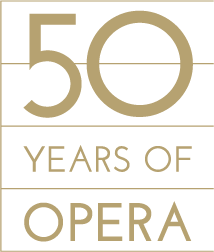This story is part of a series of 50 stories we are releasing to commemorate 50 years of opera in West Michigan. Browse more stories and follow our journey throughout the season.
From a hip-hop musical film starring Queen Bey to one the greatest cartoons of all time.
Opera is deeply ingrained in our popular culture. The art form has long been a rich source of themes seen in film, TV, advertisements, and more recently, video games. Opera has helped to amplify the most dramatic scenes in movies, inspired all-out parodies and fanciful plot devices, and added comic relief to a plethora of TV advertisements. We’ve collected some of our favorites below. Stay tuned. There will be more to come!
Citizen Kane
Citizen Kane, the 1941 American film by Orson Welles, features the character Susan Alexander–Kane’s love interest–in a humiliating operatic career for which she has neither the talent nor the ambition. Herman J. Mankiewicz, Welles’ co- screenwriter, intended to feature in the film an opera sequence from Jules Massanet’s Thais. Ironically, Massenet wrote the role of Thais for Sybil Sanderson who was, at one time, engaged to newspaper tycoon William Randolph Hearst–the man who’s life forms the basis of Welles’ film. However, due to copyright issues at the time of the film’s production, Herrmann instead wrote selections in French verismo style from the ersatz opera Salommbo.
Carmen the Hip Hopera featuring Beyoncé
Carmen is often thought to be the most popular and recognizable opera of all time. A quick search on the IMDb database results in an astounding 136 films that feature the opera’s famous “Habanera” aria. Queen Bey takes it a step further in this throwback made-for-tv musical film loosely based on the opera’s story. Borrowing elements of the opera’s themes of seduction and jealousy, Carmen the Hip Hopera is set in Philadelphia and Los Angeles in modern times and features a mostly original hip-hop/R&B score. The hip hopera features Beyoncé in her debut acting role.
Porgy and Bess‘ “Summertime” by Ella Fitzgerald and Louis Armstrong
George Gershwin’s “Summertime” is recognized as one of the most covered songs in the history of recorded music, featuring over 33,000 covers. The song, from the 1935 opera Porgy and Bess, soon became a popular and much recorded jazz standard, described as “without doubt … one of the finest songs the composer ever wrote.” Jazz legends Ella Fitzgerald and Louis Armstrong offer their interpretation from their 1958 awarding-winning album of the opera considered to be the most musically successful among the jazz vocal versions of the opera.
Warner Bros. Cartoon “What’s Opera Doc?”
“What’s Opera, Doc?” is a 1957 animated cartoon musical short featuring Elmer Fudd chasing Bugs Bunny through a parody of Richard Wagner’s operas, particularly Der Ring des Nibelungen, Der Fliegende Holländer, and Tannhäuser. The cartoon borrows heavily from the second opera in the “Ring Cycle” Die Walküre, woven around the standard Bugs-Elmer conflict. The cartoon is widely regarded as Chuck Jones’ masterpiece, and many film critics, animation fans and filmmakers consider it to be the greatest of all Warner Bros. cartoons. It has topped many Top Ten lists of the greatest animated cartoons of all time. It was rated by a panel of over 1000 animators in Jerry Beck’s 1994 book The 50 Greatest Cartoons: As Selected by 1,000 Animation Professionals as the greatest cartoon of all time. In 1992, the United States Library of Congress deemed it “culturally, historically, or aesthetically significant”, and selected it for preservation in the National Film Registry, making it the first cartoon to receive such honors.
The Simpsons’ ‘Homer’ Sings Opera
The second episode of The Simpsons‘ nineteenth season features title character Homer Simpson who, after gaining the ability to sing opera following an accident, becomes a professional and famous opera star. There’s a catch, however: Homer must sing while lying on his back for his voice to sound operatic. Guests stars include Plácido Domingo as himself and Maya Rudolph. The episode was nominated for a Writers Guild of America Award in 2008.

OUR FOUNDERS HAD A BOLD PROPOSITION: to build a professional opera company that would put Grand Rapids on the map for a very discerning audience. 50 years later, we are humbled to be the modern bearers of classical standards and modern ingenuity. Learn more.
SUPPORT OUR NEXT 50 YEARS
As an integral part of our city’s artistic fabric, it’s our responsibility to see to its continual flourishing. Please consider donating to Opera Grand Rapids to ensure our artistic excellence for the next 50 years and beyond. You’ve already made us great. With your support, there’s no limits to the height our voices can reach together. Give today.









